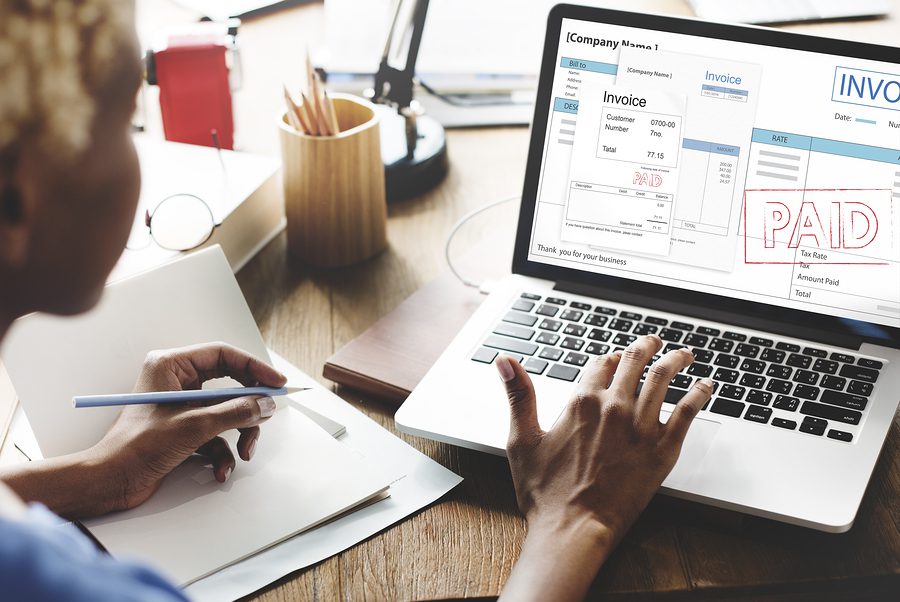 Dear reader, we don’t know each other well, so I’ll need you to trust me when I say I am a nice person. I give second and third chances, and sometimes even fourth chances. And while being nice is usually a good thing, as a freelancer, it can be an attribute others like to take advantage of.
Dear reader, we don’t know each other well, so I’ll need you to trust me when I say I am a nice person. I give second and third chances, and sometimes even fourth chances. And while being nice is usually a good thing, as a freelancer, it can be an attribute others like to take advantage of.
It happens to every freelancer at least once in his or her career: a client who defaults on payment. For almost 10 years I have been blissfully untouched by this rite of passage. Then last year, it came along and blindsided me. Now, in full disclosure, I committed some rookie mistakes and that’s on me because I should know better. The first mistake I made was that I didn’t research the company to see how much cash they had backing their venture. My second mistake was working without a contract. I was personally brought on board by the Director of Marketing, so I took the assignment on good faith. To make a long story short, I stopped writing for them last summer when it got to the point they’d fallen behind paying me on three invoices which totaled nearly $5,000. In the year I wrote for them, never once was I paid on time. As of this writing, I am still waiting for the last payment for the invoice I submitted in July 2016. And no, I will not just eat the loss. They will pay me. If I have to hound them until they do. I’m nice, not stupid.
Last year, New York City became the first city in the nation to protect freelance workers against client nonpayment with the passage of the Freelance Isn’t Free Act. This Act requires written contracts for freelance gigs, allows freelancers to file complaints against non- and late-paying clients with the Department of Labor Standards, and institutes penalties against clients found guilty of nonpayment in small claims court. Advocacy group Freelancers Union says 44 percent of their members have issue getting paid to the tune of over $10,000 in unpaid invoices! According to them there are four types of nonpaying client:
Nonpayers with good intentions
Usually, these clients have a reasonable explanation for not being able to pay on time, and in most cases, it’s about cash flow. They will be upfront with you and offer to pay you on a specific day in the future. When you find yourself dealing with this type of client, suggest breaking the payments into smaller increments and confirm the timetable in writing and then before each payment is due. I offered to do this with my nonpaying client, but was rebuffed. Hello, red flag!
Another option is to have a policy of always withholding copyright until the final project fee is delivered. That way if the client tried to use your final product before you received payment, they would be violating your copyright. Not only does this give you stronger leverage if it ever comes to a legal dispute, it also lights a fire under them to pay you as quickly as possible.
Unhappy and they let you know it
These clients are just unhappy. They could be unhappy with you, your work, or both. So, they’re just not going to pay until they are happy again. If the error lies with you, then apologize, sincerely apologize, and offer a good faith resolution. Especially if you’re hoping to work with this client again. The resolution could be a slight discount on the overall project price or an extra that wasn’t in the initial contract. Whatever you chose to do, listen to your gut. Sometimes a client is worth fighting for and other times, the client will be unhappy no matter how big of an olive branch you extend.
Serial nonpayers
May you never encounter this type of client: the one who never pays. These are the clients where you really need to listen to your gut… and research. If they’re trying to stiff you, chances are you’re not the first (nor the last) and other freelancers know who they are. Tap into your freelance network to find out what others know about this client. Ask questions until you’re sure you have the most complete picture of what this client is all about.
Big business defaulters
These are the clients that should have absolutely no problem paying you well, and on time because they typically make millions in revenue, which means cash flow isn’t the issue. So, why do they leave freelancers hanging? Simply because they can. In this instance, your best option is to make your presence known with your contact in accounting. Even though my delinquent client wasn’t a mega company, it wasn’t until I finagled a phone call with the Chief Financial Officer that I finally got someone to admit that they had no money to pay me. Since that initial phone call, he’s heard from me almost every month and will continue to do so until I have that final payment in my hand.
How can you get your clients to show you the money? Try one of these seven tactics:
- Have a payment policy. A 30-, 60-, 90-, or even 120-day pay cycle are usually the standard. If there is a discrepancy between your normal pay cycle and the client’s pay cycle, try to reach a compromise. For example, if they pay on a 90-day cycle and you usually get paid on a 30-day cycle, see if 60 day is an acceptable solution.
- Specify a late fee. This can either be a percentage of the total invoice or a flat fee. There will probably be some trial and error on your way to finding out which avenue works best for your freelancing niche. But even a small fee could be just the nudge the client needs to pay the invoice on time.
- Include “Dispute Resolution” terms in your contract. This clause is especially important if you do a job outside of the state that you live in. You should include that the jurisdiction would be in your state/county, not in theirs.
- Send your invoices promptly. Some elements your invoices should include are: have the submit date and due date prominently placed where it can’t be missed. If the payment is tardy, make sure subsequent invoices reflect that with warnings such as ‘Third Notice – 60 days past due’ and that they include late payment charges. Above all, send your invoices promptly.
- Use an online invoicing and time tracking program. Of course, there’s an app for that! Three free apps to try are Google Wallet, PayPal, and Wave (and here’s an in-depth review of Wave: https://www.cloudwards.net/wave-accounting-review/).
- Have a follow-up system. Start friendly and get progressively more serious as the situation warrants. A note of caution: never let it get personal or harass the client.
- Last but not least, small claims court. If it comes to this point, remember the different minimum and maximum sums of money you can collect in court varies by state, so you’ll want to consult with a lawyer to review the rules in your city/county/state.
Remember the Director of Marketing I talked about at the beginning of this post? Turns out she wasn’t entirely satisfied with the company that wasn’t paying me either and switched to another… and then called me to write for them. But this time, she included a link to an article talking about the over six million in funding the company had, which would ensure I would get – gasp! – paid. And once she and I agreed on terms, a contract was emailed to me within an hour. A contract which has already proved valuable in documenting my pay rate when it was called into question after submitting my first invoice. See? I’m learning.
Share in the comments if you’ve ever been left holding the invoice and how you resolved the situation.


